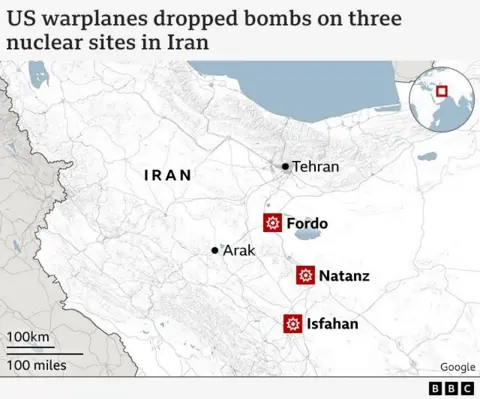The recent escalation between the United States and Iran marks a pivotal shift in a long-existing geopolitical conflict. With US military actions targeting Iranian nuclear facilities and Israeli Prime Minister Benjamin Netanyahu vocalizing support, the dynamics of the region have dramatically changed. Notably, as Netanyahu addressed the media, he expressed his gratitude towards US President Donald Trump for the recent airstrikes, which he believes could potentially alter the course of history. This alliance highlights the ongoing tensions surrounding Iran’s nuclear ambitions, which have been a long-standing concern for both Israel and the United States.
Netanyahu’s rhetoric reflects his historical anxiety regarding Iran’s influence and nuclear capabilities, which he perceives as an existential threat to Israel. Over the past fifteen years, Netanyahu has tirelessly campaigned to convince American leadership about the necessity of military intervention to neutralize Iran’s nuclear program. His commendation towards Trump for taking decisive military action indicates a significant triumph for his foreign policy agenda, particularly considering Trump’s previous stance against military involvement abroad.
Crucially, this alliance comes amidst varying assessments of the imminent threat posed by Iran. US intelligence agencies have reportedly not aligned with Israel’s evaluation regarding the timeline Iran would require to develop a nuclear weapon. This dissonance raises questions about the motivations behind the US’s airstrikes and whether they indicate an effort to staunchly align with Israeli interests or stem from an overarching strategy regarding military presence in the region.
The conflict has seen Israeli officials insisting that they could manage the Iranian threat independently. However, it is crucial to recognize that only the United States has the capability to deploy substantial military resources that could effectively compromise Iran’s nuclear sites, particularly those fortified within complex facilities such as Fordo. Following the strikes on these facilities, if they indeed neutralized their operational capacity, it could signal a turning point for Israel in this ongoing military engagement.
Iran, for its part, has insisted on relocating its nuclear materials ahead of the attacks, suggesting a calculated response to mitigate the damage from such airstrikes. Following the bombings, the question arises of how Iran will retaliate, as domestic and regional actors have already issued statements threatening retaliation. Iran’s Supreme Leader, Ayatollah Ali Khamenei, had previously warned that any American military intervention would provoke severe consequences.
Military reactions are not solely limited to direct confrontation; proxies from Iran could engage in asymmetric warfare against American targets within the region. This includes potential attacks on US military installations, movements in shipping lanes, and operations directed at disrupting the oil supply through the Gulf, potentially inflating global oil prices.
The United States has indicated that for the time being, it does not aim to bring about a regime change in Tehran and may instead limit its military objectives to deterrence rather than aggressive escalation. Such a strategy may catalyze a restrained response from Iran, allowing them to manage their retaliation in a manner that avoids significant loss of life. Historically, Tehran has demonstrated a capacity for measured responses, evidenced by its reaction to the assassination of Qasem Soleimani in 2020.
As tensions escalate, the Middle East holds its breath, caught in a delicate balance where the next moves from both the US and Iran might either lead to a resolution of the ongoing conflict or spiral into a more intense military confrontation. Observers are keenly watching to see if this marks a definitive turning point or if it ushers in a new phase filled with uncertainty and increased violence. The outcome of this complex and nuanced situation will undoubtedly shape the future of international relations in the region.



